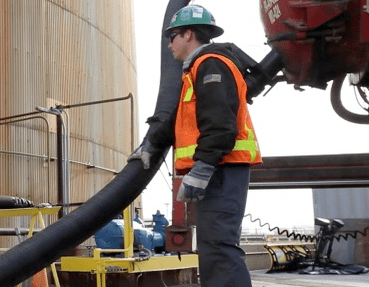Oil Spill Preparedness and Avoidance Onsite and On the Road
 Oil spills are a serious concern for many in the EH&S field. With the recent onslaught of crude oil accidents on trains, the DOT is making safety regulations on trains carrying crude oil even more stringent. Whether you transport crude oil or hire someone to do it for you, it's important to not only do all you can to avoid an accident, but also to be prepared for the worst.
Oil spills are a serious concern for many in the EH&S field. With the recent onslaught of crude oil accidents on trains, the DOT is making safety regulations on trains carrying crude oil even more stringent. Whether you transport crude oil or hire someone to do it for you, it's important to not only do all you can to avoid an accident, but also to be prepared for the worst.
With these potential rules generating buzz in the media everywhere from TIME, to the Wall Street Journal, to Bloomberg and the LA Times, it's obvious that this is some pretty big news. Will you be covered if they take effect?
Inspired by the possible updates, we decided to rehash the steps that you can start taking to ensure that your employees know what steps to take to avoid an oil spill and are prepared to immediately respond in the event of the unexpected.
Follow these five steps to reduce the chances of a spill and avoid anxiety in the event of an emergency by preparing for a spill in advance.
1. Know the regulations
One of the most helpful but also most difficult parts about avoiding oil spills is knowing all of the regulatory bodies that have rules on how oil can be stored and tranported. Organizations from the EPA to DOT to OSHA have their hands in this subject. Knowing the regulations surrounding it will not only help you remain in compliance, but will also help you understand what precautions are important to stay safe.
The newly proposed DOT regulation would require all DOT-111 tank cars be retrofitted or removed from the rails completely by 2017.
Key practices in making sure all these regulations are properly addressed are:
- upkeepnig equipment and containers
- overseeing other employees are taking proper safety precautions.
2. Share precautionary resources and training
It's important that your employees read through all relevant regulations and go through extensive safety training before dealing with hazardous materials, but it is also imperative that the company or institution keep employees up to date with news and regulation changes. To keep training and safety fresh in the minds of your employees, set up automatic emails to go out with the latest related news. The linked news pieces at the beginning of this blog post are perfect examples of the kinds of updates you should be sending your employees.
3. Implement your Facility Response Plan
Does your company have a plan as mandated by state and/or federal regulations? Make sure you first have a plan and then, that all parts of the plan are compliant with the most recent regulations. Review the plan with all your employees and hang it up around your facility.
4. Qualify, quantify, contain, and report
If a spill occurs, the person on-site must be qualified to:
- determine the exact source of the spill
- approximate when it first broke loose and what approximate amount has leaked
- recognize any hazards
- begin to contain the spill
- report the oil spill based on federal, state and local requirements
Make sure all personel who might ever be in a situation regarding an oil spill are trained to do this.
5. Develop a post-emergency remedial plan
You should also have a plan of action for after a spill occurs. Your emergency response provider should ask some questions (in advance of any spill) to help you gauge where there may be gaps or gray areas in your long-term response strategy. Taking proactive measures today will help you avoid spills, stay in compliance and assure that in the case of an emergency, you employees will handle the sitation properly.
Nervous for the new regulations? We can audit for safety and compliance, and serve as your emergency response team in addition to meeting any of your other EH&S needs. Contact our experts to see what we can do for you!





